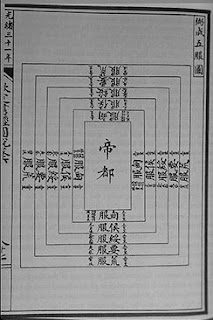
The Medieval History Quiz
Question 1
There are no precise, incontrovertible dates to define the beginning or end of the Middle Ages. However, many scholars agree that the start of the medieval era is marked by a very significant development that took place in the fifth century. What is that development?
A The Black Death
B The Fall of Rome
C The Renaissance
Question 2
The western portion of the empire may have fallen, but the eastern portion, also known as The Byzantine Empire, lasted another thousand years. When its capital city was conquered by the Turks in the fifteenth century, it was renamed Istanbul. What was the Byzantine capital city called throughout the Middle Ages?
A Adrianople
B Constantinople
C Salonika
Question 3
After the Roman Empire collapsed in the west, many Barbarian kingdoms sprang up in its place. One Barbarian King, Clovis, was influenced by his wife Clotilda to convert to Catholicism. This resulted in a good working relationship with the Pope that would be of great significance as his heirs built a powerful nation in what is today France.
Who did King Clovis rule?
A The Franks
B The Picts
C The Visigoths
Question 4
Those Barbarians were everywhere after Rome fell, including Great Britain. Which of these tribes made successful advances into England in the fifth century?
A The Avars
B The Huns
C The Saxons
Question 5
Ten years before his death, the prophet Muhammad led a hijrah from Mecca to Medina to escape persecution. This event marks the beginning of the Muslim calendar. In what year did it take place?
A 410
B 622
C 1066
Question 6
In the eighth century, Charlemagne built an empire that covered, among other places, parts of modern day France, Italy and which of these countries?
A Germany
B Norway
C Spain
Question 7
The "Viking Age," a period when Scandinavian marauders engaged in numerous raids on locations in Britain and Europe, was kicked off with the sacking of Lindisfarne in 795. What was sacked at Lindisfarne?
A An abbey
B A castle
C A university
Question 8
Only one king of England ever earned the appellation "Great." Who was he?
A King Aethelred
B King Alfred
C King Edmund II
Question 9
In the tenth century, Otto, King of Germany, was crowned Emperor Otto I by Pope John XII. What empire did Otto rule?
A The Byzantine Empire
B The Carolingian Empire
C The Holy Roman Empire
Question 10
Historians divide up the Middle Ages into three sub-eras. Which era is sandwiched between the Early Middle Ages and the Late Middle Ages?
A The High Middle Ages
B The Intense Middle Ages
C The Middle Middle Ages
Question 11
In Britain, the beginning of this middle period of the medieval era is marked by the Norman Conquest, when William of Normandy successfully invaded England. What was William's first battle upon landing on English soil?
A The Battle of Fulford Gate
B The Battle of Hastings
C The Battle of Stirling Bridge
Question 12
In November of 1095, at the Council of Clermont, Pope Urban II made a speech calling for the First Crusade. The objective was to travel to the Holy Land and capture which city from the Muslim Turks?
A Antioch
B Constantinople
C Jerusalem
Question 13
Tournaments were very popular in the Middle Ages, and Jousting was often the main event at such festivals. When a knight rode in a joust, what weapon would he use to try to knock his opponent off his horse?
A A dagger
B A hackbut
C A lance
Question 14
With its pointed arches, its ribbed vaults, and its flying buttresses, the Cathedral of Notre Dame in Paris is an example of what architectural style?
A Baroque
B Gothic
C Romanesque
Question 15
The epidemic that struck Europe in the 14th century was fierce and diabolical, and it would later come to be known as the Black Death. What disease is generally agreed to be the sickness that caused this horrible event?
A Bubonic Plague
B Leprosy
C Scarlet Fever
Question 16
Who fought in the Hundred Years War?
A England & France
B France & Italy
C Scotland & England
Question 17
While in service to the king of England, Geoffrey Chaucer visited Italy on diplomatic duties, where many scholars believe he encountered the works of Bocaccio, Petrarch and Dante. Which of Chaucer's works do scholars believe to be inspired by Bocaccio's Decameron, in which ten travelers each tell ten tales to entertain each other on their long journey?
A The Book of the Duchess
B The Canterbury Tales
C The Parliament of Fowles
Question 18
The "Age of Discovery," when Columbus and his contemporaries braved the Atlantic to look for a western route to the East, is considered by some scholars to be a significant turning point that marks the end of the Middle Ages. Columbus was inspired by an earlier traveler that journeyed to the Far East in the 13th century. Who was this explorer?
A St. Brendan
B Leif Ericsson
C Marco Polo
Question 19
As the Middle Ages began to wane, the Renaissance burst forth in Italy, and some marvelous artwork was created. It was also a time for new ways of thinking, focusing less on religion and more on the individual.
Which of these philosophies is most closely associated with the Italian Renaissance?
A Humanism
B Platonism
C Scholasticism
Question 20
In the sixteenth century, what monk wrote 95 theses addressing problems in the Catholic Church, thus setting into motion the Protestant Reformation?
A Jan Hus
B Martin Luther
C John Wycliffe















 people eat in Medieval times
people eat in Medieval times















